Are you seeking to enhance your shoulder flexibility? You’re on the right track. Shoulder mobility exercises, a vital part of yoga, not only boost your flexibility but also increase the range of motion and strength of your shoulder joints. These elements are crucial for executing various yoga poses safely and effectively. Over time, factors like aging, stress, or a sedentary lifestyle may cause your body to lose flexibility. But don’t worry, yoga’s got your back. In this guide, we will share 22 yoga poses to improve shoulder flexibility and overall wellness.
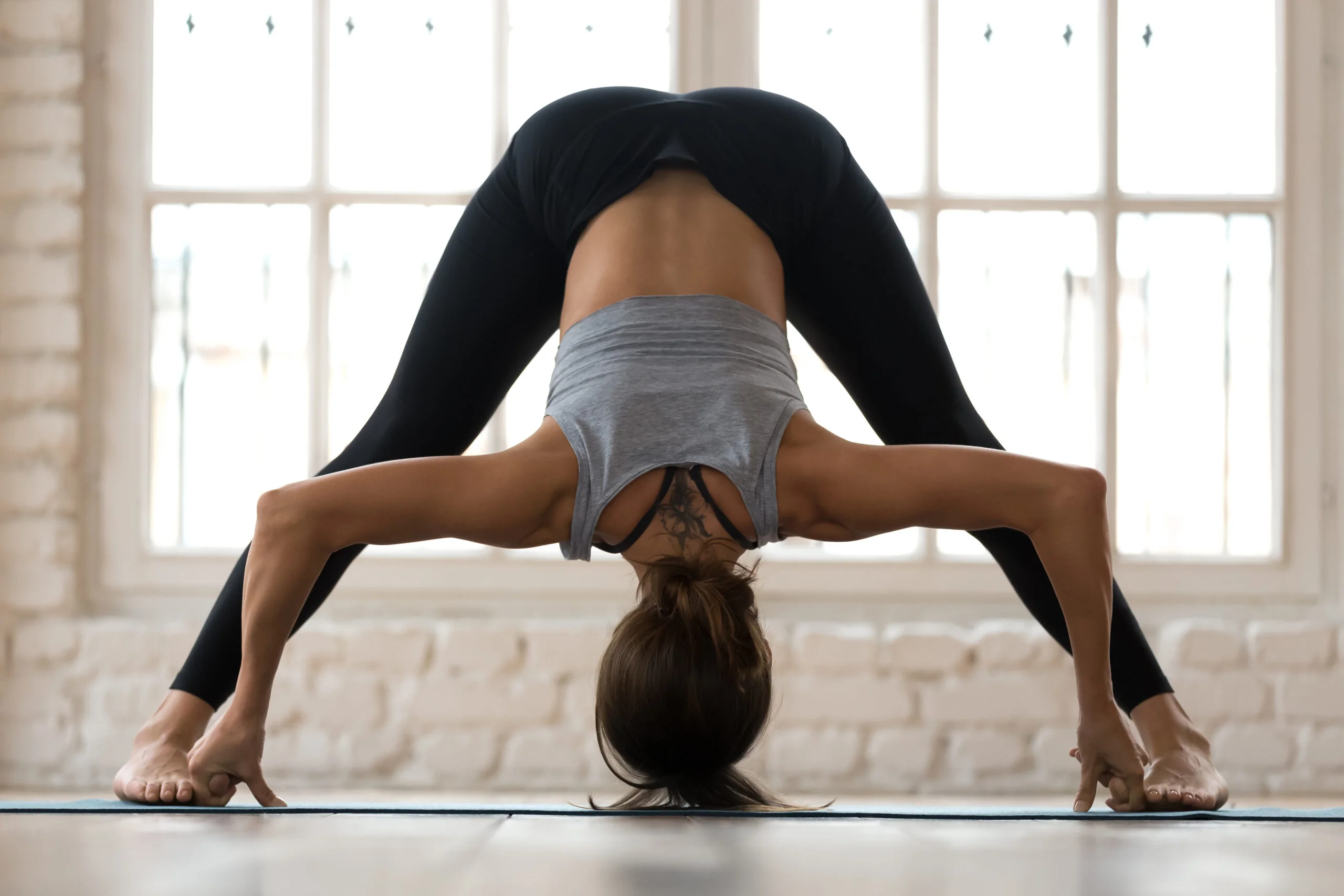
Contents
- 1 22 Yoga Poses To Improve Shoulder Flexibility
- 1.1 1. Mountain Pose with Shoulder Stretch:
- 1.2 2. Cat-Cow Pose:
- 1.3 3. Downward-Facing Dog:
- 1.4 4. Puppy Pose:
- 1.5 5. Thread the Needle Pose:
- 1.6 6. Eagle Arms:
- 1.7 7. Cow Face Pose Arms:
- 1.8 8. Child’s Pose with Side Stretch:
- 1.9 9. Standing Forward Fold with Clasp:
- 1.10 10. Dolphin Pose:
- 1.11 11. Camel Pose:
- 1.12 12. Extended Triangle Pose:
- 1.13 13. Warrior II:
- 1.14 14. Reverse Warrior:
- 1.15 15. Locust Pose:
- 1.16 16. Bow Pose:
- 1.17 17. Cobra Pose:
- 1.18 18. Upward-Facing Dog:
- 1.19 19. Bridge Pose:
- 1.20 20. Fish Pose:
- 1.21 21. Plow Pose:
- 1.22 22. Wheel Pose:
- 2 Frequently Asked Questions:
22 Yoga Poses To Improve Shoulder Flexibility
Improving shoulder flexibility can enhance your overall mobility and reduce the risk of injury. Yoga is an excellent way to achieve this, offering poses that gently stretch and strengthen the shoulder muscles. Here are 22 yoga poses that can help improve shoulder flexibility:
1. Mountain Pose with Shoulder Stretch:
Stand tall in Mountain Pose (Tadasana), interlace your fingers behind your back, and gently lift your arms away from your body. This action helps to open the chest and stretch the shoulders, promoting flexibility and relieving tension in the upper back and shoulder area.
2. Cat-Cow Pose:
Flow between arching your back downward (Cow Pose) and rounding it upwards (Cat Pose) while on your hands and knees. This movement not only increases spine flexibility but also encourages gentle stretching and strengthening of the shoulders, aiding in the relief of stiffness and improving mobility.
3. Downward-Facing Dog:
Starting on your hands and knees, lift your hips towards the ceiling to form an inverted V shape. This well-known pose stretches the shoulders, hamstrings, and calves while strengthening the arms and legs. It’s excellent for releasing tension in the shoulders and neck.
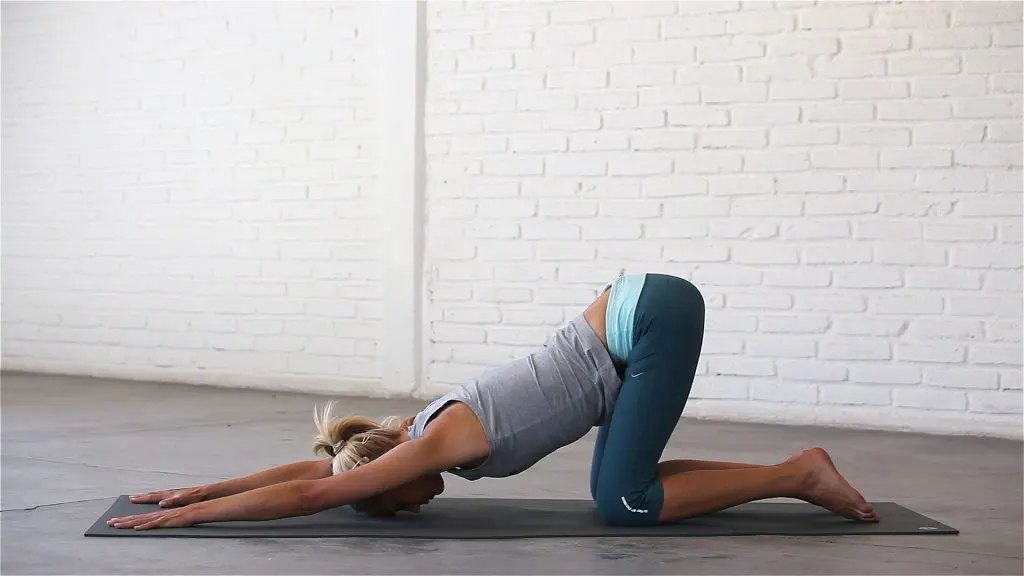
4. Puppy Pose:
From a tabletop position, walk your hands forward, keeping your hips over your knees, and lower your chest towards the ground. This pose deeply stretches the shoulders and spine, offering a gentle yet effective way to enhance shoulder flexibility.
5. Thread the Needle Pose:
Beginning in a tabletop position, slide one arm underneath the other, with the shoulder and side of the head resting on the floor. This twist stretches the shoulders, arms, and upper back, providing a relieving stretch that targets the whole shoulder girdle.
6. Eagle Arms:
Cross one arm over the other, bending at the elbows to bring the palms together in front of your face if possible. This pose can be done standing or seated and is excellent for stretching the upper back and shoulders, improving flexibility, and relieving tension.
7. Cow Face Pose Arms:
Reach one arm up and bend it downwards while the other arm reaches behind your back from below, attempting to clasp the fingers of both hands. This intense shoulder stretch improves flexibility in the shoulders and triceps, helping to release built-up tension.
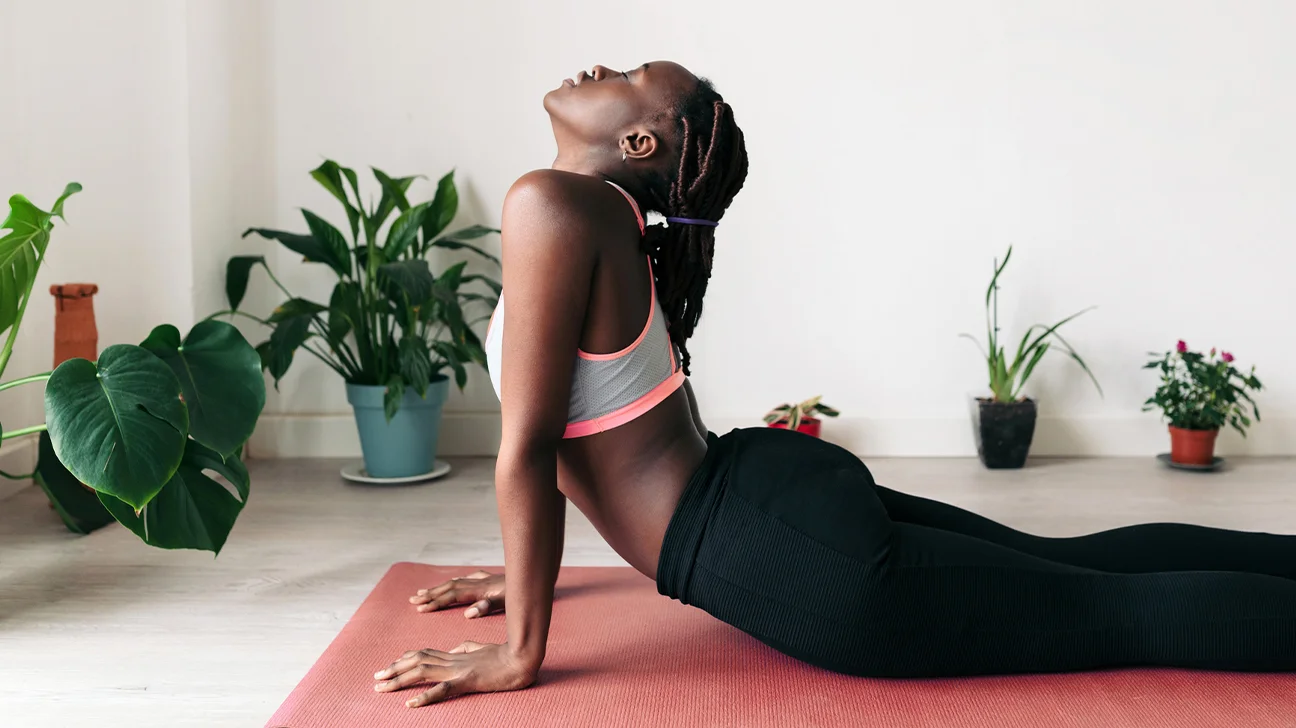
8. Child’s Pose with Side Stretch:
From Child’s Pose, walk your hands to one side, keeping your hips back towards your heels. This variation adds a gentle stretch to the shoulders and the side of the body, enhancing flexibility while providing a soothing effect on the mind and body.
9. Standing Forward Fold with Clasp:
Stand with feet hip-width apart, hinge at the hips to fold forward, and interlace your fingers behind your back, extending the arms over your head towards the ground. This pose stretches the shoulders, chest, and hamstrings, promoting flexibility and relieving tension in the upper body.
10. Dolphin Pose:
Begin on your hands and knees, lower your forearms to the ground, and lift your hips high. This pose strengthens the core, arms, and legs, while deeply stretching the shoulders, encouraging improved mobility and strength in the shoulder area.
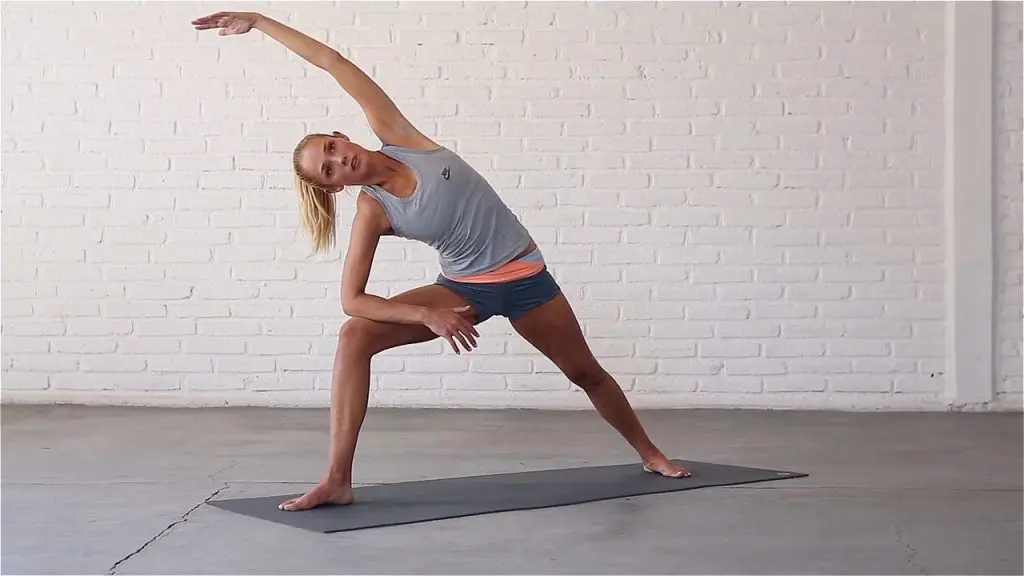
11. Camel Pose:
Kneel with your knees hip-width apart, reach back to place your hands on your heels, and extend your chest upwards and backward. This backbend opens up the entire front body, including the shoulders and chest, promoting flexibility and counteracting the forward hunch of daily activities.
12. Extended Triangle Pose:
Step your feet wide apart, extend your arms to the sides, and tilt at the hip to reach one hand towards the floor and the other to the sky. This pose stretches and strengthens the thighs, knees, ankles, and shoulders, improving flexibility and relieving tension.
13. Warrior II:
From a standing position, step your feet wide apart and raise your arms parallel to the floor, then bend one knee. This pose strengthens and stretches the legs and ankles, while the arm position improves shoulder flexibility and stability.
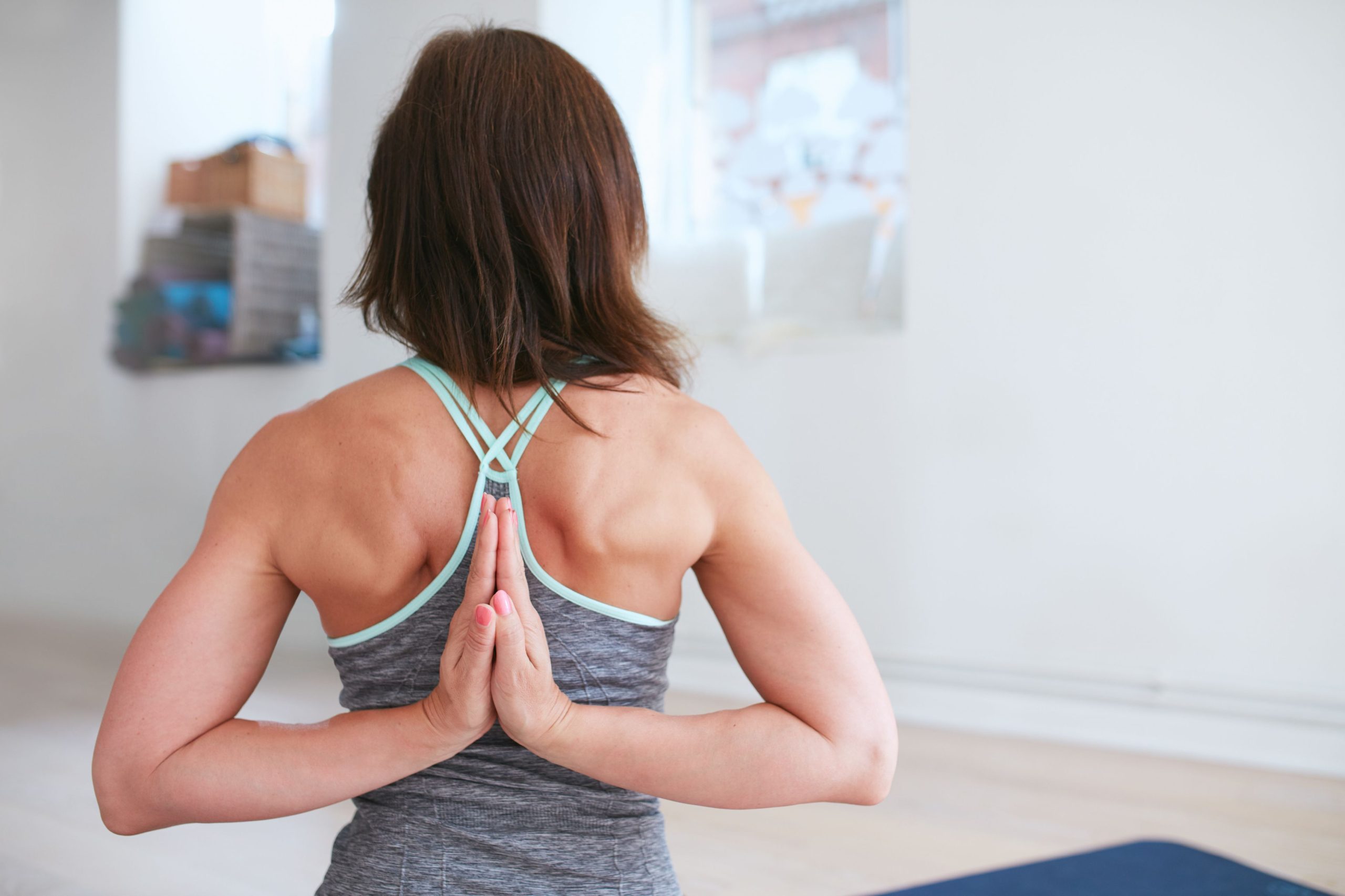
14. Reverse Warrior:
From Warrior II, gently arch back, letting one arm slide down the back leg while the other reaches upwards, creating a light backbend and opening the side body. This pose stretches the sides of the body and shoulders, enhancing flexibility and relieving tension.
15. Locust Pose:
Lie on your stomach, lift your head, chest, and limbs off the floor, and reach your arms back towards your feet. This backbend strengthens the back muscles and shoulders, improving posture and flexibility in the shoulder area.
16. Bow Pose:
Lie on your stomach, bend your knees, and reach back to grab your ankles, lifting into a backbend. This intense stretch opens up the shoulders and chest, significantly improving flexibility and strength in the upper body.
17. Cobra Pose:
Lie on your stomach, place your hands under your shoulders, and gently lift your chest off the ground, keeping your elbows close to your body. This gentle backbend stretches the shoulders and chest, promoting flexibility and relieving tension.
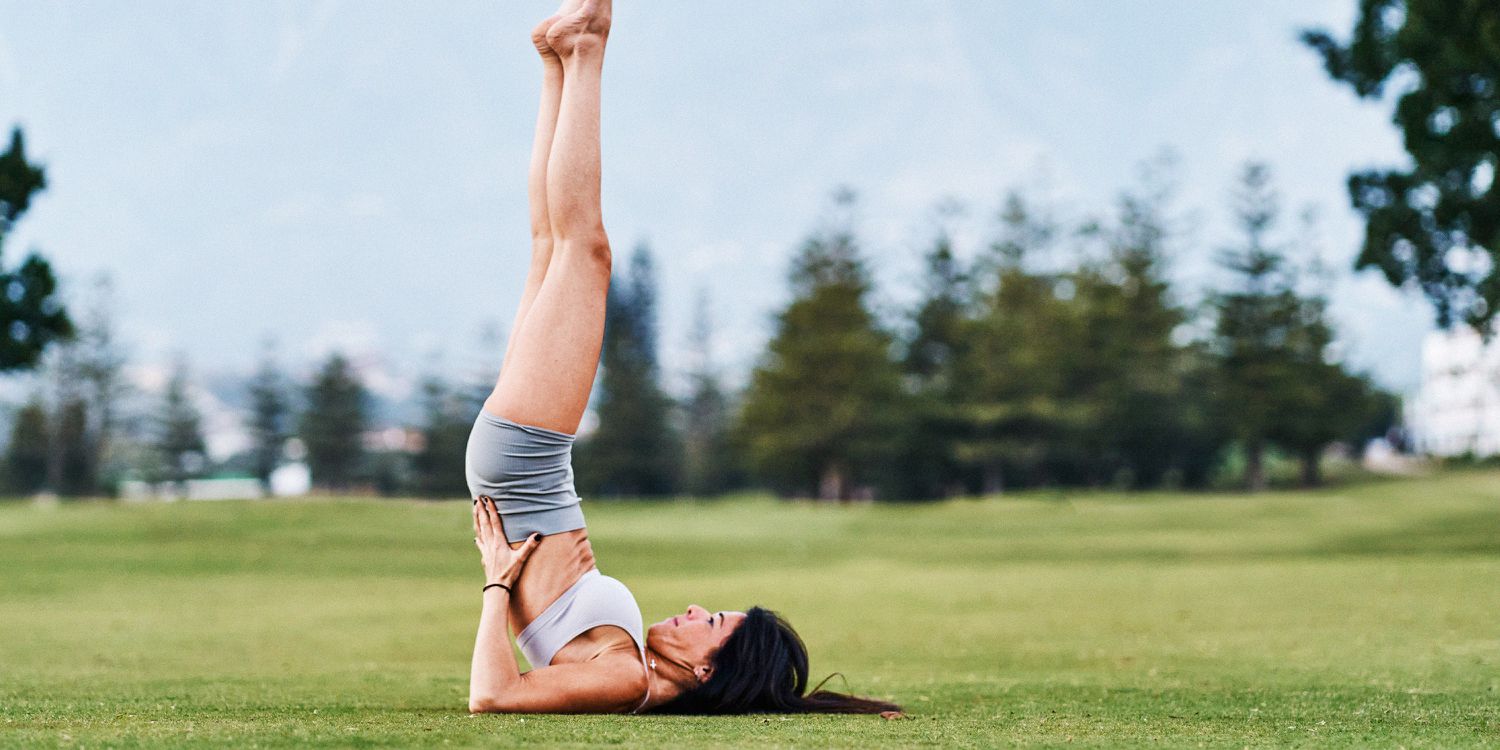
18. Upward-Facing Dog:
From Cobra Pose, straighten your arms to lift your chest and hips off the floor, with only your hands and the tops of your feet touching the mat. This more intense backbend deeply opens the shoulders and chest, enhancing flexibility and strength.
19. Bridge Pose:
Lie on your back, bend your knees, and place your feet on the ground, then lift your hips towards the ceiling. This pose not only strengthens the back and legs but also opens the shoulders and chest, promoting flexibility and relieving tension.
20. Fish Pose:
Lie on your back, place your hands under your hips, and arch your chest towards the ceiling, resting on your forearms and elbows. This deep chest and shoulder opener enhances flexibility in the upper body, counteracting the common forward hunch.
21. Plow Pose:
Lie on your back, lift your legs over your head, and try to touch the floor behind you with your toes, hands supporting your back or lying flat on the floor. This pose stretches the shoulders and spine, promoting flexibility and relieving tension.
22. Wheel Pose:
Lie on your back, place your hands by your ears, and press up into a full backbend, lifting your body off the ground with your hands and feet. This intense pose strengthens and stretches the entire body, especially the shoulders and chest, promoting flexibility and improving posture.
Frequently Asked Questions:
What are some yoga poses for strengthening the shoulders?
Yoga poses that target the shoulder joints like Downward Dog, Eagle Pose, and Wheel Pose can greatly enhance shoulder strength and flexibility. Incorporating side planks can also add an excellent shoulder-strengthening move to your routine.
Can yoga assist in alleviating shoulder discomfort?
Absolutely, yoga is beneficial for all body parts, especially the neck and shoulders. Overworking and neglecting these areas could lead to discomfort or pain. Yoga stretches can significantly help in relieving tension, improving posture, and flexibility, and strengthening muscles in these areas.
How long does it take to improve shoulder mobility through yoga?
Generally, significant changes in shoulder mobility through regular yoga exercises may begin to show over several months, though some improvements can be noticed within a few weeks.
Can you define the zipper test for measuring shoulder flexibility?
The zipper test is a shoulder flexibility test where one hand is reached behind the neck and down the spine while the opposite hand is brought behind the back and up. The proximity of both hands to each other measures your shoulder flexibility.
Why is shoulder mobility often poor?
Poor shoulder mobility can be caused by numerous conditions affecting the shoulder, such as injuries, chronic conditions that lead to degeneration, shoulder bursitis, or arthritis, resulting in limited shoulder mobility.

Hello, I’m Ravindra. Over the years, I’ve immersed myself deeply into the world of fitness and health, transforming both my body and mind. Writing has allowed me to share my journey, insights, and expertise with those just starting out and seasoned fitness enthusiasts alike. Beyond just routines and diets, I believe in inspiring others to adopt a holistic approach to well-being.
